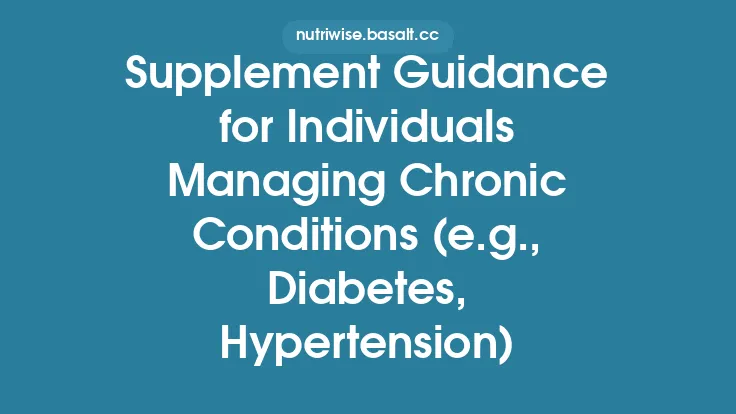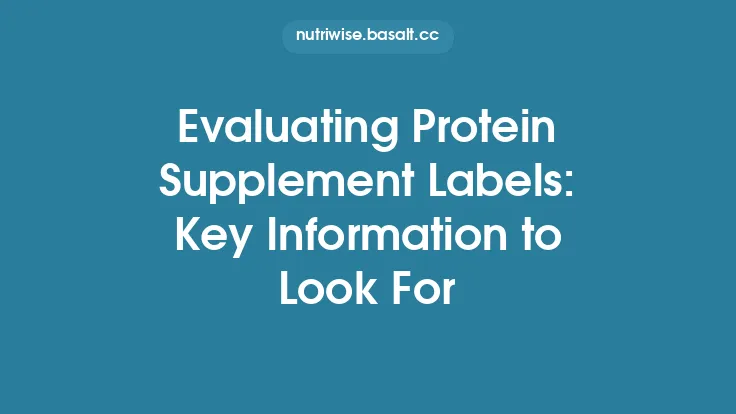Dietary supplements have become a staple in many people’s daily health routines, promising everything from enhanced immunity to improved joint function. While the market offers an overwhelming variety of products, the true differentiator for a safe and effective supplement lies behind the scenes—in the way it is manufactured. Good Manufacturing Practices (GMP) provide the framework that ensures each capsule, tablet, powder, or liquid meets consistent standards of quality, purity, and potency from raw material to finished product. Understanding GMP is essential for anyone who wants confidence that the supplements they consume are produced under rigorous, scientifically‑backed conditions.
What Is GMP and Why Does It Matter for Supplements?
Good Manufacturing Practices are a set of regulations, guidelines, and best‑in‑class procedures that govern the manufacturing, testing, and distribution of products. For dietary supplements, GMP focuses on:
- Consistent product quality – each batch must meet the same specifications for identity, strength, composition, and purity.
- Safety assurance – processes are designed to prevent contamination, mix‑ups, and other hazards that could compromise consumer health.
- Traceability – every ingredient and step in the production chain is documented, allowing manufacturers to track the origin of any issue that may arise.
The overarching goal is to protect the consumer while fostering trust in the supplement industry. When a company adheres to GMP, it demonstrates a commitment to scientific rigor and ethical responsibility.
Historical Evolution of GMP in the Supplement Industry
The concept of GMP originated in the early 20th century with the pharmaceutical sector, where the need to control drug quality became evident after several high‑profile incidents of contamination and mislabeling. In the United States, the Food, Drug, and Cosmetic (FD&C) Act of 1938 laid the groundwork for modern quality standards. As the dietary supplement market expanded dramatically in the 1990s, regulators recognized that supplements required a distinct set of manufacturing controls—leading to the establishment of the Current Good Manufacturing Practice (cGMP) regulations for dietary supplements in 2007.
Since then, GMP has evolved from a static checklist to a dynamic, risk‑based system that incorporates advances in technology, data analytics, and quality‑by‑design (QbD) principles. Internationally, similar frameworks have been adopted, such as the European Union’s GMP guidelines for food supplements and the International Conference on Harmonisation (ICH) Q7 for active pharmaceutical ingredients (APIs) used in nutraceuticals.
Core GMP Principles Applied to Dietary Supplements
- Quality Management System (QMS)
A documented QMS defines responsibilities, procedures, and performance metrics. It integrates all aspects of production—from raw material sourcing to final product release—ensuring that quality is built into every step rather than inspected at the end.
- Personnel Qualification and Training
Employees must possess the appropriate education, experience, and ongoing training to perform their duties. Training programs cover hygiene, equipment operation, documentation practices, and emergency response.
- Facility and Equipment Design
Production areas are designed to minimize cross‑contamination, with separate zones for raw material handling, processing, and packaging. Equipment is selected for ease of cleaning, validated for performance, and maintained on a preventive schedule.
- Raw Material Control
Suppliers are vetted through a rigorous qualification process that includes audits, certificates of analysis (CoA), and, where appropriate, independent testing. Incoming materials are inspected for identity, purity, and compliance with specifications before acceptance.
- Process Control and Validation
Manufacturing steps are defined in detailed standard operating procedures (SOPs). Critical process parameters—such as temperature, mixing speed, and humidity—are monitored and recorded. Validation studies confirm that the process consistently yields a product meeting its predetermined specifications.
- In‑Process and Finished‑Product Testing
Samples are taken at defined points to verify identity, potency, dissolution, microbial limits, and other quality attributes. Analytical methods are validated for accuracy, precision, specificity, and robustness.
- Documentation and Record‑Keeping
Every action, observation, and decision is captured in a permanent record. Batch production records (BPRs) link raw material lots, equipment, operators, and test results, creating a complete audit trail.
- Complaint Handling and Product Recall
A systematic approach to investigating consumer complaints, adverse events, and out‑of‑specification (OOS) results enables rapid corrective actions. If a product poses a risk, a recall plan is executed in accordance with regulatory guidance.
- Continuous Improvement
Data from production, testing, and post‑market surveillance feed into corrective and preventive actions (CAPA). Trends are analyzed to refine processes, update SOPs, and enhance overall product quality.
Implementing GMP: A Step‑by‑Step Overview
- Gap Analysis
Conduct a comprehensive review of existing practices against GMP requirements. Identify deficiencies in documentation, equipment, training, or supplier management.
- Develop a GMP Implementation Plan
Prioritize corrective actions based on risk impact. Assign responsibilities, set timelines, and allocate resources for each improvement.
- Upgrade Facility and Equipment
Install air filtration systems, dedicated processing lines, and cleaning stations. Ensure equipment is calibrated and validated for the specific supplement forms (e.g., tablets, softgels, powders).
- Establish Supplier Qualification Program
Create criteria for selecting and monitoring raw material vendors. Implement a system for periodic re‑evaluation, including on‑site audits and performance metrics.
- Create and Validate SOPs
Draft SOPs for every critical activity—receiving, weighing, blending, granulation, compression, coating, packaging, and labeling. Conduct validation studies to demonstrate that each SOP yields consistent results.
- Train the Workforce
Deliver role‑specific training modules, followed by competency assessments. Maintain training records and schedule refresher courses at regular intervals.
- Implement a Robust QMS Software
Use electronic batch records, document control, and deviation management tools to streamline data capture, reduce errors, and facilitate real‑time monitoring.
- Perform Internal Audits
Schedule routine internal audits to verify compliance with SOPs and GMP standards. Document findings, assign corrective actions, and track closure.
- Prepare for Regulatory Inspection
Compile all required documentation—facility layouts, equipment logs, validation reports, and batch records—so they are readily accessible for inspection.
- Launch Ongoing Monitoring
Use statistical process control (SPC) charts, trend analysis, and key performance indicators (KPIs) to detect deviations early and intervene before they affect product quality.
Distinguishing GMP for Supplements from Pharmaceutical GMP
While both sectors share the same foundational principles, there are notable differences:
| Aspect | Pharmaceutical GMP | Dietary Supplement GMP |
|---|---|---|
| Regulatory Scope | Focuses on drug efficacy, safety, and therapeutic claims. | Emphasizes safety, identity, and composition; efficacy claims are limited. |
| Product Complexity | Often involves complex synthetic or biologic APIs. | Typically uses botanical extracts, vitamins, minerals, and simple APIs. |
| Stability Requirements | Must demonstrate long‑term stability under defined conditions. | Stability testing is required but may be less extensive, reflecting shorter shelf‑life expectations. |
| Clinical Validation | Requires extensive clinical data for approval. | No clinical trial requirement for market entry; however, safety data must be available. |
| Labeling Controls | Strictly regulated claims and dosage forms. | Claims are more general (e.g., “supports immune health”) and subject to different guidance. |
Understanding these nuances helps manufacturers tailor their quality systems appropriately while still meeting the rigorous expectations of GMP.
Global GMP Harmonization and International Considerations
The supplement market is truly global, and manufacturers often source ingredients from multiple continents. To facilitate trade and ensure consistent quality, several international initiatives promote GMP harmonization:
- Codex Alimentarius – Provides a set of internationally recognized food safety standards, including GMP guidelines for food supplements.
- ISO 22000 – A food safety management system that integrates GMP principles with hazard analysis and critical control points (HACCP).
- EU GMP for Food Supplements – Aligns with Codex but adds specific requirements for novel foods and botanical extracts.
Companies that adopt these globally accepted standards can more easily navigate import/export requirements, reduce duplication of audits, and demonstrate a unified commitment to quality across markets.
The Role of Technology in Modern GMP
Advancements in automation, data analytics, and digital traceability have transformed how GMP is applied:
- Automated Blending and Tablet Presses – Reduce human error, improve batch uniformity, and provide real‑time process data.
- In‑Line Spectroscopy (e.g., NIR, Raman) – Enables rapid, non‑destructive verification of ingredient identity and potency during manufacturing.
- Enterprise Resource Planning (ERP) & Manufacturing Execution Systems (MES) – Integrate procurement, production, quality, and distribution data into a single, searchable platform.
- Blockchain for Supply Chain Transparency – Immutable ledgers can record each transaction—from seed to shelf—enhancing traceability and consumer confidence.
When properly validated and integrated, these technologies not only support compliance but also drive efficiency and cost savings.
Common Challenges and How to Overcome Them
| Challenge | Impact | Mitigation Strategy |
|---|---|---|
| Supplier Variability | Inconsistent raw material potency or purity. | Implement a robust supplier qualification program, require CoAs, and conduct periodic independent testing. |
| Cross‑Contamination | Presence of allergens or unintended ingredients. | Design dedicated processing lines, enforce strict cleaning SOPs, and use validated cleaning verification methods. |
| Documentation Overload | Errors or omissions in batch records. | Adopt electronic batch record systems with built‑in checks and audit trails. |
| Regulatory Updates | Shifts in GMP expectations can create compliance gaps. | Establish a regulatory intelligence function that monitors changes and updates SOPs accordingly. |
| Resource Constraints | Limited budget for equipment upgrades or training. | Prioritize risk‑based improvements, seek cost‑effective automation, and leverage shared training resources within industry groups. |
Proactive planning and a culture of continuous improvement are essential to navigating these obstacles without compromising product quality.
Benefits of GMP Compliance for Manufacturers and Consumers
- For Manufacturers
- Reduced risk of product recalls and associated financial losses.
- Enhanced brand reputation and market differentiation.
- Streamlined operations through standardized processes.
- For Consumers
- Assurance that the supplement contains the ingredients and potency listed on the label.
- Lower likelihood of exposure to contaminants or allergens.
- Greater confidence in the overall safety of the product they ingest daily.
When both sides experience these advantages, the entire supplement ecosystem becomes more resilient and trustworthy.
Looking Ahead: Future Directions in GMP for Dietary Supplements
The landscape of dietary supplement manufacturing is poised for further evolution:
- Personalized Nutrition – As genomics and metabolomics enable individualized supplement regimens, GMP will need to accommodate small‑batch, highly customized production while maintaining rigorous controls.
- Sustainability Integration – Environmental stewardship is becoming a core component of quality systems, prompting manufacturers to adopt green manufacturing practices that align with GMP principles.
- Artificial Intelligence (AI) for Predictive Quality – Machine learning models can forecast potential deviations based on historical data, allowing preemptive adjustments before a batch goes off‑spec.
- Regulatory Convergence – Ongoing dialogue among global agencies aims to create a unified GMP framework, simplifying compliance for multinational supplement producers.
Staying attuned to these trends will ensure that GMP remains a living, adaptable system that continues to safeguard public health.
Practical Takeaways for Stakeholders
- Manufacturers should conduct regular GMP gap analyses, invest in technology that enhances traceability, and foster a culture where quality is everyone's responsibility.
- Suppliers must maintain transparent documentation, perform self‑audits, and be prepared to share detailed CoAs with their partners.
- Consumers can look for manufacturers that openly communicate their GMP compliance—such as providing access to batch records or third‑party audit summaries—as an indicator of product integrity.
By understanding the mechanics of Good Manufacturing Practices, all participants in the supplement supply chain can make informed decisions that prioritize safety, efficacy, and trust.





